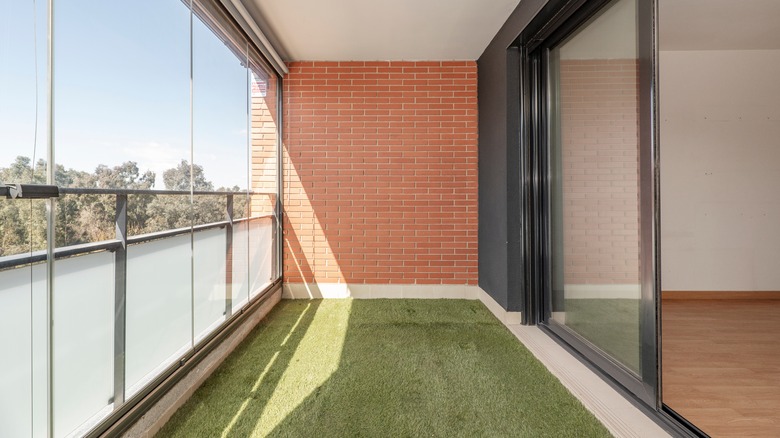Although one of the biggest advantages of installing artificial grass on your property is that it requires far less maintenance than a natural lawn, the materials used to create the turf can heat up to uncomfortable temperatures in the depths of summer, potentially as high as 200 degrees Fahrenheit. Beyond being uncomfortable to use, if the turf becomes too hot, it is possible for portions of it to suffer damage or even melt.
You can take a number of steps to try to keep the artificial turf at a reasonable temperature, allowing you to use it during parties or for playtime with the kids or pets. During installation, you can do things like adjust the type of infill you’re using. You can also sprinkle the faux grass with water and use shade to keep the surface temperature reasonable and safe. When selecting the location for the installation, avoid placing the turf near areas of glass, as it can melt under heat that reflects from the glass.
Additionally, look for artificial turf that consists of higher-quality materials, which are less likely to absorb the radiant heat from the sun than lower-quality materials. Some brands of faux grass carry specific designs and ingredients that are made to avoid overheating during a heat wave, so you may want to select this type of turf when living in an area with high summer temperatures to avoid burning bare feet or pet paws.
Select the location of the artificial turf location carefully to avoid overheating

Reflection from glass creates radiant heat that can damage the materials, almost like a magnifying glass concentrating sunlight on the turf. Don’t place the installation near a greenhouse or around areas of your home or garage that have a lot of windows. If you must place the turf near a lot of glass, add shade to the glass that reduces the reflection on hot, sunny days.
Keeping as much direct sunlight off the faux grass as possible protects it during a heat wave. If possible, install the turf in an area of the yard that has some natural shade from trees or from the home during the hottest part of the day in the afternoon. In an area that has a lot of shade, it can be difficult to grow natural grass, so artificial grass is a doubly good choice here.
As a final tip when selecting a location for the installation, try to avoid placing the faux grass in areas where it will have significant exposure to foot traffic. When high temperatures are present, the blades of faux grass tend to compact and compress at a higher rate than in normal temperatures. It’s more difficult for the materials to rebound to their original shape and height in high temperatures, too. You can walk on the material in hot weather but try to avoid having multiple people go across the same path repeatedly.
Considerations when selecting and installing artificial turf in hot weather climates
If you know that you will be exposing the artificial grass to extremely high temperatures a few times throughout the year, start by figuring out which materials used to make artificial grass will survive in significant heat waves. For example, faux grass blades that consist of nylon are a strong choice for areas that have exposure to sunlight. Nylon has a resistance to the UV rays in sunlight, ensuring that it will hold its color. Additionally, it doesn’t absorb heat as significantly as other materials found in artificial turf, allowing it to avoid damage in heat waves.
Another option is to consider polyethylene artificial turf, which often is marketed as a pet-safe turf. Although it may not get quite as hot as some other materials used to make faux grass, it still can reach temperatures of 120 degrees Fahrenheit and higher, which could burn the paws of pets or the bare feet of people, so you may want to use a sprinkler or a water sprayer on the material during heat waves to cool it before allowing pets and kids to play on it.
Finally, it’s important to use a type of infill during the installation that will not absorb heat and allows for air flow to keep temperatures cooler during significantly hot weather. Materials that work as cooler infill include silica sand and thermoplastic elastomers, which absorb less heat than black rubber crumbs, for example.